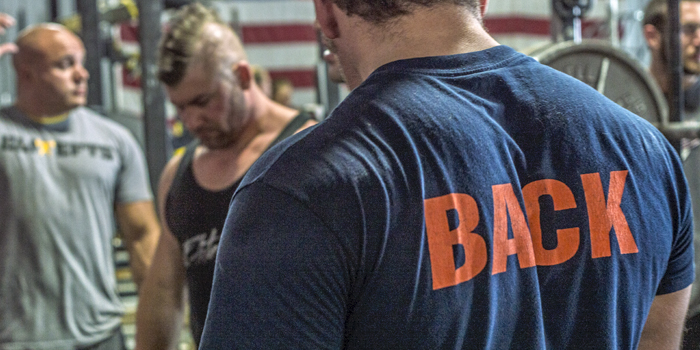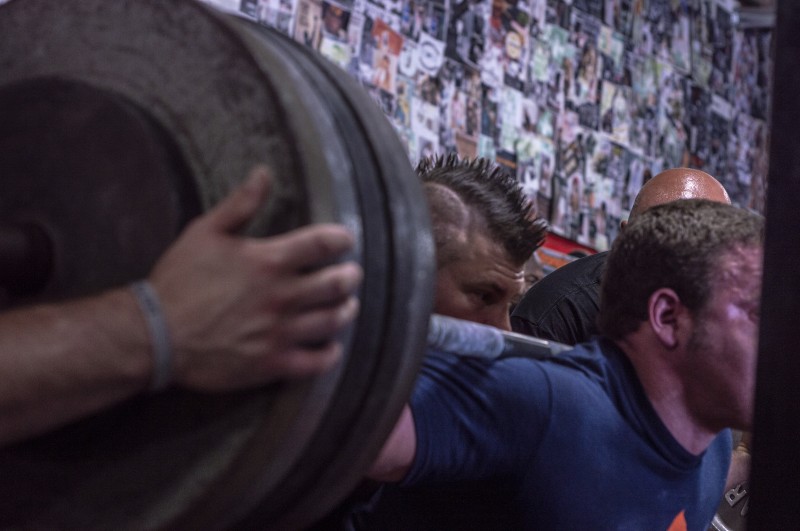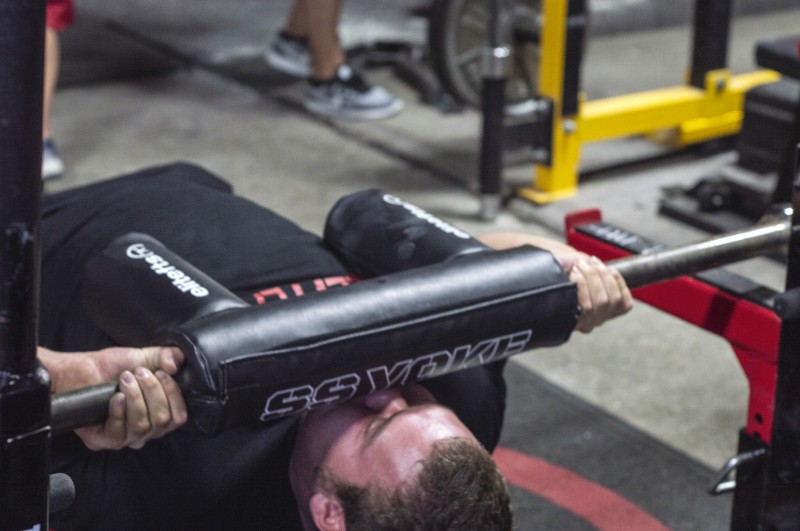
elitefts Classic
Here are a couple of things you should know:
- If your program is solid, you won’t need to back down, except before a meet. This is assuming you take a light session in place of a heavy one.
- If you are very serious, then you should be competing 2-3 times per year. Each time, you will have a one-week deload before the meet and another light week after. This is six weeks a year of deloading (backing down). Now, if you factor in those days you have to back off, due to muscle pulls and training partners who don’t show up, you can add in another four weeks, minimum.
Doing the math, this is 10 weeks over 70 days, not counting your normal days off. Keep in mind, I didn’t add in any vacations, so it could be more. The point is, if you are not recovering, you may need to look at other aspects: nutrition, conditioning, and more importantly, the strength development plan being used.
Personally, I would rather see 4-6 light weeks after a meet with no squats, pulls, or barbell benches, rather than seeing programmed deloads. Yes, this will make you weaker, but I have found getting the barbell off the joints for an extended time period is worth the extra weeks that will be added to the next training phase to build any lost strength back up. Regardless of how strong you are, it doesn’t matter if you can’t show up healthy enough to display it.
RECENT: To Swab or Not to Swab: Genetic Testing and Performance
In other words, it is not always the strongest that wins. Instead, it's the guy who comes in the healthiest to display their strength. Many times the strongest will train for a meet and throughout the training cycle beat themselves up so when the day comes to display their strength they are not able to, due to all the little injuries they picked up along the way. How many times have you heard a top lifter say what they just PRd with an injury? “Yeah, I just benched a 30-pound PR, but think I could have hit 50 pounds if my damn elbow didn’t hurt so bad." My question is why not just slightly increase the training load for the next meet and come in at the same strength, and this time get the 50 pounds? Yet, this doesn’t happen. Instead, they keep pounding the elbow and don’t break a new PR for a year or two, until they finally fix the elbow issue—some never will.
Going back to the barbell statement I noted above, how do you feel the elbow would feel with six weeks of no barbell pressing? Better? Worse? Odds are it will feel better and if it doesn’t, this may be a giant clue that it’s time to see a doctor. I only used the elbow as an example, but this is also true for the spine, hips, shoulders, etc.
This is NOT a total break from training, as that would be a big mistake, but would take another article to explain that one. Another option is to just wait for the next major injury to happen. This can give you up to 4-12 weeks off of a main lift (if surgery is required). This is how I did it. Took me years to figure this one out, but after some time passed I realized that it really wasn’t the best idea.
If are an elite or pro lifter, you know when you can push it and when you can’t. Many times you can’t trust how you feel until after you warm up and start your work sets. What feels like a crappy day often ends up your best. What feels great warming up turns out to feel like a ton of bricks when you get to the work sets. You can and will learn how to make these calls the longer you train. The key factor is to trust in yourself and learn to listen to your body. There is a simple fact that is rarely spoken of. I strongly feel anyone who puts in the time and effort can total elite. A pro total is another story, but even then I feel some to most who put in the time and effort can achieve this as well. If your genetics suck it will take much longer, and you'll have to be that much smarter and give much more effort. If you are blessed with a great genetic skill set, it won’t come without doing the training but will come fairly easy. This isn’t saying those who are genetically gifted don’t work hard—they do. It’s just stating a fact. The road to the top will be and is easier.
Before I continue, I do want to state one thing: How do you know if you have great genetics or not, if you haven’t given it all you have? Who knows, maybe you do but haven't allowed yourself the ability to use that as an advantage. If you are one of the gifted ones, you do not have to train as much or do as many work sets as others do. If you do so you will break yourself down with unnecessary work that won’t progress you any faster. I have known guys who fall into this category who only squatted and pulled once a month and benched twice a month with a few added accessory days “to look good” and they killed it every time they hit the platform. Would they have been better training 4x a week? My personal opinion is no and I fully understand many people will disagree and they are entitled to their opinion.
Here are some suggestions on backing down/deloading I wrote a few years ago:
Dynamic Work
Because of the SPP of the sport, it is best to keep the movements the same. These include the deadlift, bench press, and squat. Since the movement stays the same, the loading patterns need to change. This is where you see all the different dynamic training cycles. We have two manuals detailing these for the squat, deadlift, and bench press. Using many different cycles is very important for constant progress.
Average Cycle Length: 3-4 weeks Deload: after one or two cycles
Max Effort Work
Because of the increased intensity (the load) needed to use this method, the cycles are more limited. The GPP and experience of the lifter also limits the number of weeks one can use the same movement. The point is, this movement may need to change every 1-3 weeks.
Average Cycle Length: 1-3 weeks deload: every 3-6 weeks
Supplemental “Main” Work
These are the main movements you use to drive your lifts. These are different for everyone but could include 4-board presses, GHR, shoulder presses and so on. These will be the movement that you feel and know have a direct relationship with your three main lifts. It is very important to train the hell out of these movements so longer cycles can and should be used with higher rep ranges. These movements might cycle for 8-12 weeks. Remember that these are movements that you know can directly influence your main lifts. Choose these wisely!
Most lifters will keep these main movements in during the entire meet training phase. The key is to change the load, sets, and reps in a direct attempt to make these lifts as strong as you can.
Average Cycle Length: 5-8 weeks Deload: every 8-10 weeks
Supplemental “Hypertrophy” Work
These are the movements and methods that are used to build mass (if needed). These can change every session to tear the body down as much as you can. This work should not be part of a pre-contest phase. Recovery is more important than mass at this time.
Average Cycle Length: N/A Deload: every 6-8 weeks
Accessory “Prehab” Work
This is the crap you have to do to keep from getting beat up. This could be external rotator work, lower back work, and so on. Usually, higher reps are used with lower intensities, so movement change doesn’t have to happen that often. These shouldn’t be too taxing. Remember that these movements are for prehab and are not supplemental work. This means that you wouldn’t have to have the same kind of RPE for these movements as you would for your max effort, dynamic, or supplemental work.
Average Cycle Length: 8-12 weeks Deload: every 8-12 weeks
Accessory “Stretching”
Stretch as needed. Usually, these movements will not change, but always be learning new ones just in case. I highly recommend the Parisi Warm-up Method DVD and the book, Core Performance by Mark Verstegen to help you choose movements.
Average Cycle Length: N/A Deload: N/A
As you can see, everything changes at its own rate, but you also need to look at the inter-relationships that are going on to determine what changes need to take place. I ripped this off the top of my head with my two kids tearing into everything, so take the numbers for what they are (estimates). They will be different for everyone because we all have different recovery needs and training backgrounds.
Some abilities may be deloaded while others are being pounded. This should be the way most of the year goes. Before a meet or when worn down, a full-blown deload should take place. A full-blown deload involves deloading all abilities.
This process will change based upon what sport you are involved in because of different types of skill-based training.













1 Comment